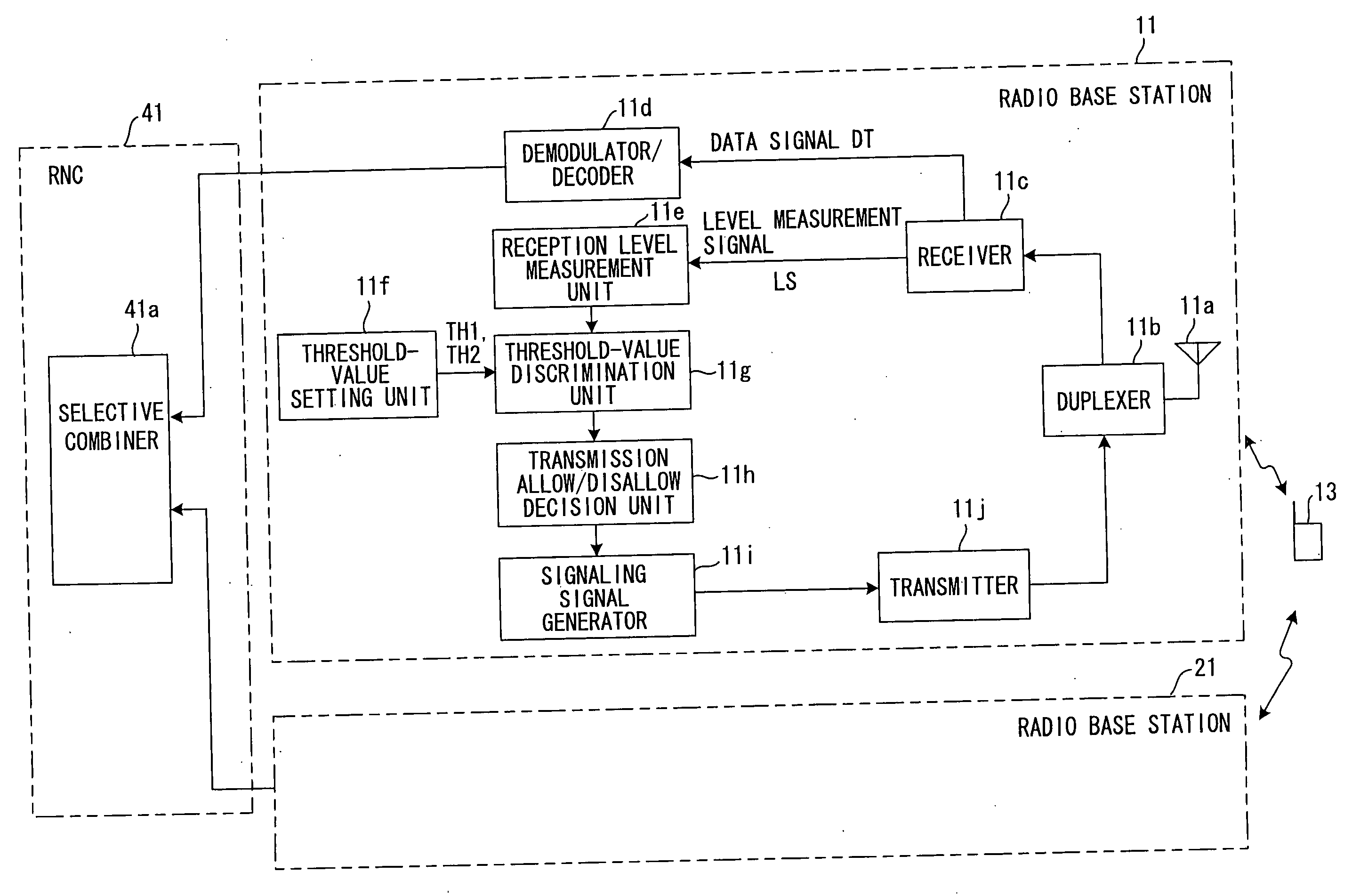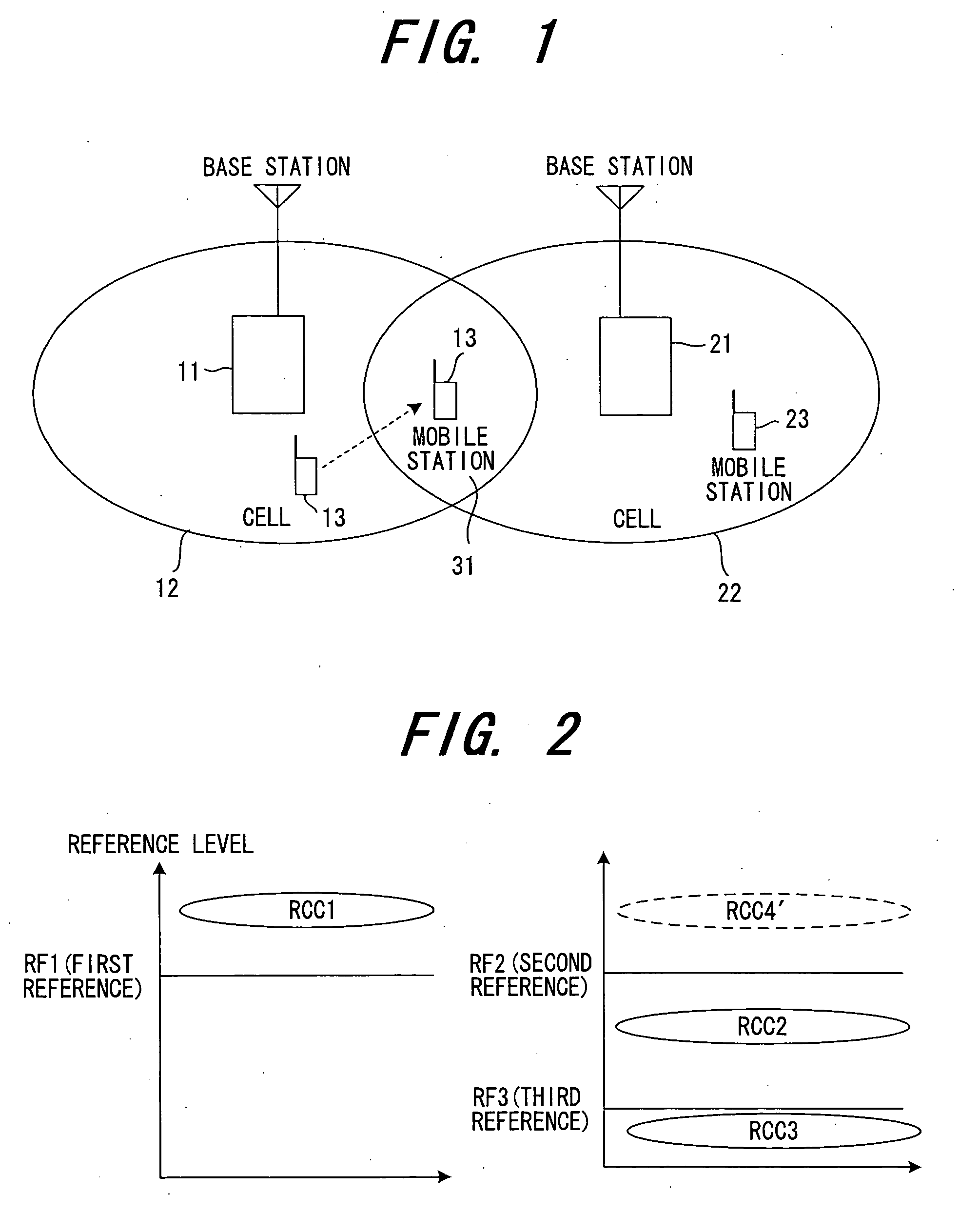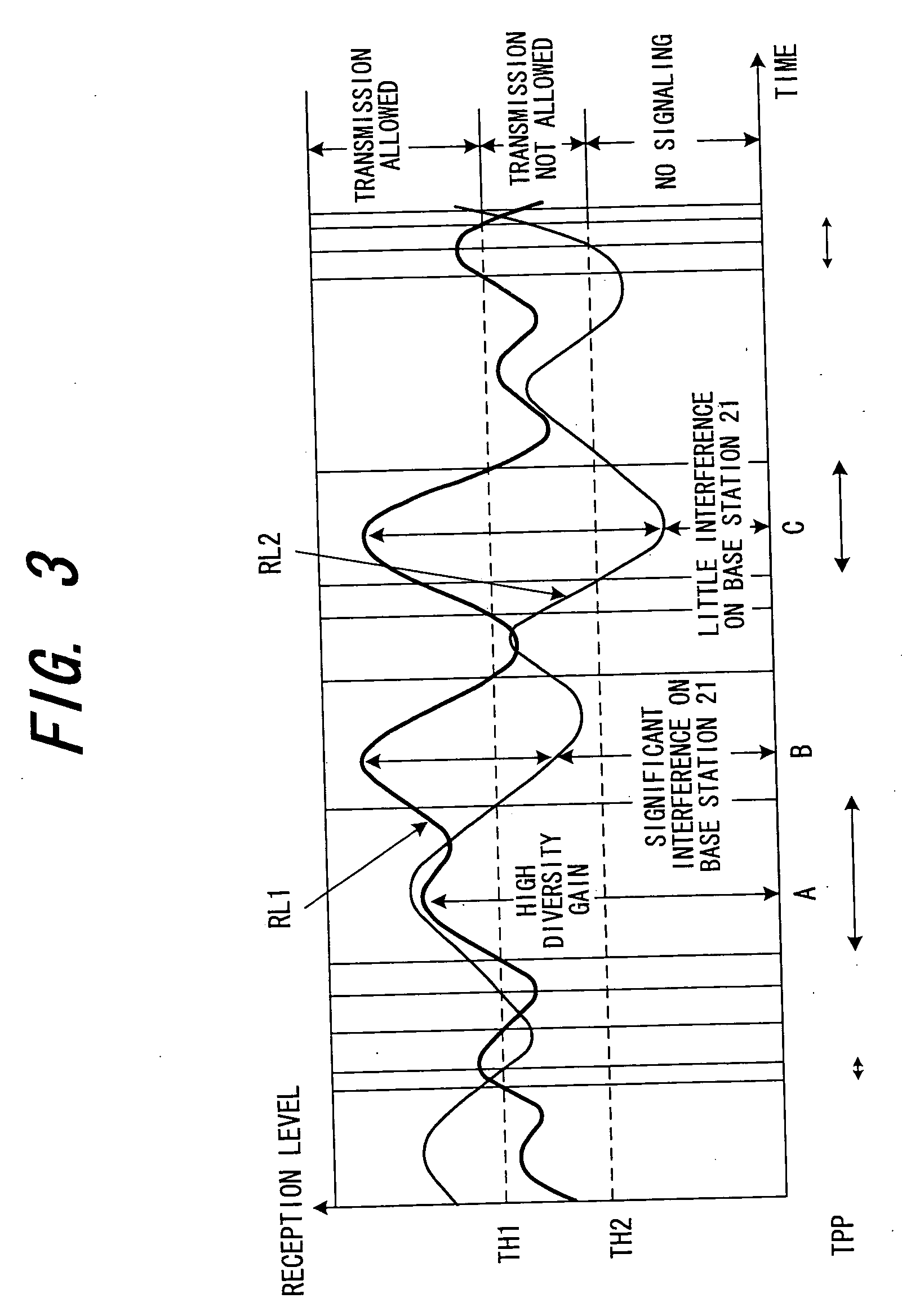Mobile communication system, radio base station and radio mobile station
a mobile communication system and radio base station technology, applied in the field of mobile communication system, can solve the problems of wasting processing at this base station, the decline in the reception quality of other mobile stations at this other base station, etc., and achieve the effect of improving system performance, reducing the amount of interference impressed upon other radio base stations, and improving system performan
- Summary
- Abstract
- Description
- Claims
- Application Information
AI Technical Summary
Benefits of technology
Problems solved by technology
Method used
Image
Examples
first embodiment
(B) First Embodiment
[0071] As shown in FIG. 1, it is assumed that the mobile station 13 is present at a location that is equidistant from the first radio base station 11 and second radio base station 21. In such case the reception levels of a signal from the mobile station 13 at the first radio base station 11 and at the second radio base station 21 will be the same in average terms and the signal from the mobile station 13 will be capable of being received by both the first radio base station 11 and second radio base station 21. In actuality, however, the reception levels fluctuate independently owing to fading and the like and, as a consequence, whether the signal from the mobile station 13 can be received correctly at each of the radio base stations 11, 21 fluctuates independently.
[0072]FIG. 3 is a diagram useful in describing ranges of levels for allowing or not allowing transmission. At a time A in FIG. 3, reception levels RL1, RL2 of a signal from the mobile station 13 are gr...
second embodiment
(C) Second Embodiment
[0108] In the first embodiment, the first and second threshold values TH1 and TH2 are fixed. In the second embodiment, however, these threshold values can be varied depending upon the QoS (Quality of Service) or real-time property of the data transmitted. For example, in the case of a circuit-switching-type service such as a voice call or TV telephone call, real-time communication is required. Therefore, in comparison with the case of a packet call (e-mail, etc.) in which there is little demand for real-time communication, the threshold value TH1 is reduced and the threshold value TH2 enlarged so as to raise the probability that transmission will be allowed. In other words, the range of reception levels over which transmission is not allowed is narrowed.
[0109]FIG. 10 is a diagram useful in describing ranges of levels at a base station for allowing or not allowing transmission in a case where the first threshold value TH1 is made small and the second threshold v...
third embodiment
(D) Third Embodiment
[0112] The first and second embodiments relate to a case where the reception level of the pilot signal included in the DPCCH is measured. In a third embodiment, however, the reception level is measured using a reservation packet.
[0113] There are communication systems in which a reservation packet is transmitted from a mobile station to a radio base station and transmission of packet data is started when transmission is allowed by the radio base station. In such a communication system, the reception level can be measured using the reservation packet. In the third embodiment, the radio base stations 11, 21 (see FIG. 1) receive a reservation packet transmitted from the mobile station 13 and, upon measuring the reception level of the reservation packet, transmit a signalling packet that instructs the mobile station that it is allowed or not allowed to transmit.
[0114]FIG. 12 illustrates examples of reservation packets according to the third embodiment, in which (A) ...
PUM
 Login to View More
Login to View More Abstract
Description
Claims
Application Information
 Login to View More
Login to View More - R&D
- Intellectual Property
- Life Sciences
- Materials
- Tech Scout
- Unparalleled Data Quality
- Higher Quality Content
- 60% Fewer Hallucinations
Browse by: Latest US Patents, China's latest patents, Technical Efficacy Thesaurus, Application Domain, Technology Topic, Popular Technical Reports.
© 2025 PatSnap. All rights reserved.Legal|Privacy policy|Modern Slavery Act Transparency Statement|Sitemap|About US| Contact US: help@patsnap.com



